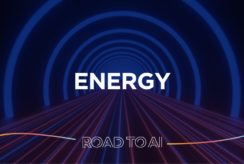Energy transmission and distribution operators carry the heavy responsibility of monitoring thousands of kilometers of infrastructure to ensure a high level of service quality. Clearly, the maintenance function has an important place in the investment strategies of energy companies, especially given that there are a number of sector-specific factors that make it more complicated and critical. What are these factors? And what tools and technologies can be harnessed to meet the challenges that maintenance brings?
Maintenance of energy networks: specific factors to be considered
Let’s start with an example: GRTgaz, the largest gas transmission operator in France, devotes over 40% of its investment budget to maintaining its plants. The maintenance of energy networks follows the same general rules as all industrial maintenance, but the nature of the gas & electric networks adds other sector-specific constraints that have to be considered:
- Geographic scope: Energy transmission and distribution networks extend over of thousands of kilometers. Hence, providing the human and logistical resources needed to run such a vast asset-base is key; and the impact of this on maintenance costs is considerable.
- Business continuity: energy is delivered in real time; a failure in the supply chain can cause a breakdown with potentially serious economic consequences. The economic risks are starkly illustrated by the following statistic: the cost of a power-cut lasting more than three minutes is 200 times higher than the cost of the electricity that would have been supplied. There will always be a chance of exceptional and unforeseeable circumstances occurring, such as climatic events or infrastructure-related accidents, which interfere with the energy supply chain; but, the condition of the asset-base also plays a key role in operational safety, a fact that explains the considerable interest in preventive maintenance.
- Security: undoubtedly a major issue for any industrial business, but even more so for energy companies, given the severity of accidents that can occur at their plants. Regulation also plays an important role in the management of industrial risks. Network managers are required to seek board-level approval for their maintenance plans and must put in place adequate measures to mitigate their risks.
Faced with these requirements, managers need to strike the right balance between maintenance activity and the associated costs – if they are to maintain the viability of their business models. And new, disruptive technologies provide a strong opportunity to achieve this.
The use of connected objects: to better understand the industrial asset-base
Industrial players were harnessing the potential of connected objects well before the public at large, but it is the democratization of these technologies that has opened up the possibility of more powerful and less expensive solutions. Advances in telecommunications also play an important role in the growth of this market, and startups like Quwisio or SigFox now offer low-cost communication services and aspire to connect millions of objects. This means the possibility for managers to put sensors in place right across their networks. As a result, the need for maintenance personnel to perform in-site inspections will be significantly reduced, as connected objects provide more visibility on the asset base.
The mass of data generated by these objects must be processed before being delivered to network supervisors, and CMMS-(Computerized Maintenance Management System)-type solutions offer to fulfill this function. Some may even benefit from mobile versions of these, offering more flexibility to maintenance agents who have to make interventions.
In April 2015, GRTgaz and Eridanis unveiled a new model for connecting the former’s gas markers, which are installed along its 33,000 kilometers of pipeline; this allows pipeline locations to be pinpointed during surveillance operations. The connected markers will allow GRTgaz to have more visibility on the network’s condition without the need for in-site inspections, and to be more responsive in the event of its deterioration. This type of experimentation will also help drive thinking on new applications for connected objects which can be used for the maintenance of plants.
Alongside this growing interest for connected objects in the energy sector, there are serious concerns about IT security, which could slow the development of solutions for industrial environments. It is important to keep this in mind in the analysis and thinking done prior to launching a project involving such technology.
Drones that can survey networks at the speed of the wind
Drones offer excellent prospects for the monitoring of networks. Because of their agility and the speed with which they operate, they can be used to inspect even the least accessible facilities. Numerous other types of operations can be carried out by drones, such as corrosion control, checking high voltage cables, or simply taking aerial photos to monitor for intrusive actions.
This type of equipment can also be used to assist the work of maintenance personnel, who can control them remotely to perform planned inspections. By doing this, physical site visits will then only be needed to deal with faults. The gains anticipated by optimizing in-site visits underscore the economic attractiveness of drones.
So far, such drones have always been controlled by a human operator. Tomorrow, we might imagine a fleet of autonomous drones running the length of a power line in order to survey it, and then feeding the information gathered back to a central system that analyzes it and schedules appropriate maintenance actions.
Several companies have launched initiatives involving drones: Engie invested €2 million in startup, RedBird, which has already worked with GRTgaz on pipeline monitoring tests. , to use its drones in maintenance, and RTE is supporting research work in this area by establishing a partnership with UPMC. In the Middle-East, DEWA, Dubai’s electricity and water authority, plans to use drones to monitor solar panel plants. More generally, companies such as BP and Shell are already using drones to monitor the least accessible places on their petroleum facilities.
In France and internationally, companies seem to have grasped the potential of drones, and are all seeking to identify their best use-cases.
Augmented reality to deliver information visually
Like connected objects, augmented reality has been used by industrial players for some time, but its associated cost initially prevented its development for large-scale applications. Today, the augmented reality market is boosted by mass market applications that are driving costs down. And energy sector players will be able to exploit the benefits this brings by identifying broader applications, including maintenance.
Maintenance personnel draw on multiple sources of information in their work (operational manuals, technical documentation, etc.) Augmented reality is of interest because it offers the operator the possibility to visualize the right information at the right time, with no time wasted in finding it. Using techniques for equipment identification such as QR codes or RFID chips, augmented reality glasses can display information related to the identified material or interact with other applications to display indicators or any other type of information. Glasses can also display additional information such as the flow of gas to a supply station, dangerous areas or safety instructions. Uses for augmented reality are manifold, and they can offer real added-value to maintenance operators. We might even imagine using these glasses as supports to on-demand applications, adapting them to the specific needs of maintenance personnel.
In April 2014, GRTgaz launched an experiment with an augmented reality prototype developed on a tablet device. Augmented reality is a major focus of GRTgaz’s innovation policy, as it is for Enedis, which has sourced its own type of augmented reality glasses, developed by the French startup, Levels3D.
In the US, Daqri, an ambitious startup, is seeking to commercialize the next generation of safety helmets equipped with augmented reality; a helmet already being tested by 10 Fortune 500 companies.
The implementation of these technologies in the energy sector will result in changes to the working environments and tasks of the maintenance staff. It will require a strategy for change management that can ensure the right tools are selected, and for the right uses.
Whatever the way forward, disruptive technologies represent an opportunity for network operators to optimize their maintenance operations, and, possibly, develop new uses for it. All the experiments carried out so far have shown strong potential with respect to these new opportunities. The next step is to put in place the processes that will drive innovation that is capable of making the most of these technological breakthroughs.



